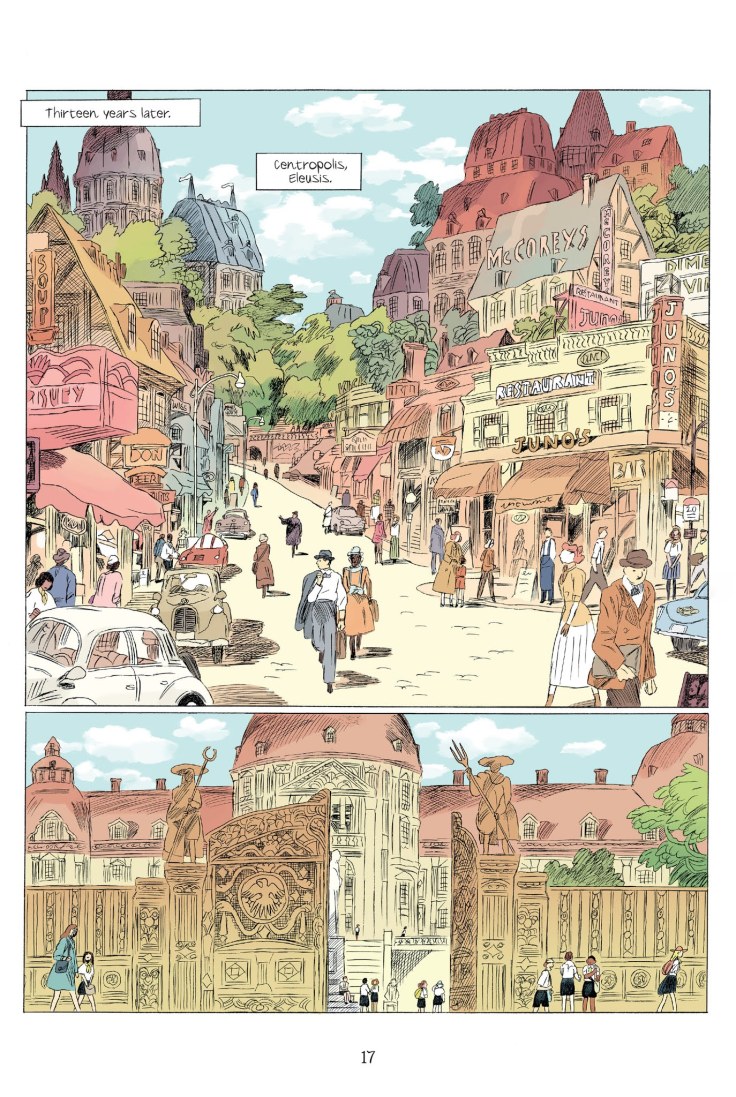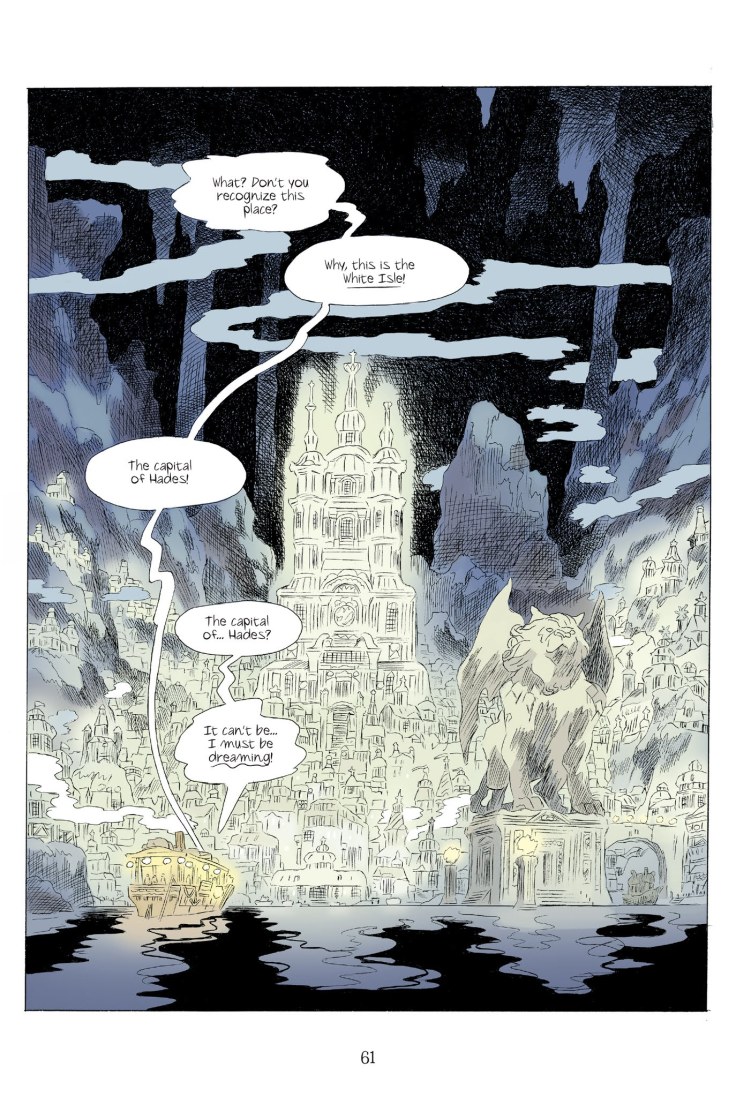A retelling of Demeter’s and Persephone’s Ancient Greek myth, this is a book for all ages, but that at the end of the day, signifies, above all else, the love and trust that should go into a parent-child relationship.
The author updates the myth with tropes that derive from 20th century fantasy, children’s and youth literature – an introductory “historical” chapter, a well-thought geography of neighbouring kingdoms with specific cultures, the perspective of a young character in the brink of adulthood, orphanhood and mystery origins, a well-kept secret, magic abilities and the struggles to conquer a role within society, great expectations and the youngster’s natural fear of failure, and so on. Moreover, Locatelli-Kournwsky’s style is this contemporary global signature that has found an elegant balance between European-style visual storytelling, page composition and colouring, North-American-styled action (even though the fighting styles are closer to Naruto) and Manga-like figuration and visual shorthand (in fact, it seems the author spends part of his working life in Japan). This is something that unites many artists from both sides of the Atlantic, from Bastien Vivès to Tillie Walden, from Kerascoët to Bryan Lee O’Malley, in such different capacities.

The story focus on young Persephone, who has been adopted by the great mage Demeter but, “not being of her blood,” as it were, she did not inherit her magical powers, and that has taxed her immensely. She does have outstanding “green thumbs,” a knack that, of course, will come extremely handy in due course in the story. The quest for her origin story, however, will be he downfall and the mechanism of the narrative: not only Persephone herself is interested in knowing what happened back in the wars, fifteen years ago, as lurking powers are also interested in her crossing the forbidden borders and descend into the Underworld. The secrets remain in Hades, but there will be enough plot twist to entertain the audience.
There’s a lot that can be read between the lines. After all, the opposition between the comfortable, rich Eleusis and the dark subterranean Hades, the talks about ancient enemies, political trust, cultural differences and a “portal” between them that shall not be crossed will surely play well into a politically-charged reading, not only of specific circumstances (say, today’s United States) but the ages-old North-South divide and where that leads us. Because there are also things to re-discover when one actually crosses the border and meet the Other eye to eye and – a major point in Persephone’s myth – eats from the Other’s table.

What the author is able to convey, however, in this classic conflict-centred story, is the extent towards which parents, of either biological or adopted children, for there is no difference here – are willing to go not only to keep them safe and happy, as well as to see them strive within their own freedom. In that sense, Persephone is a warming reading.
Visually, Persephone is a treat. The influence from anime is clear, overwhelming and beautiful, especially when he takes his time in erecting breath-taking urban landscapes, with towering edifices, illuminated spires, convoluted bas-reliefs and Parisian Art Déco-styled shop façades. If you enjoy the intricate, watercolour background art of Miyazaki or Sylvain Chomet, you’ll love the cityscapes. But there’s more to love, I assure you.


Deixe um comentário